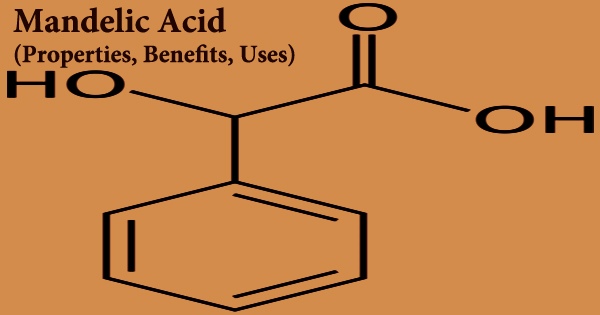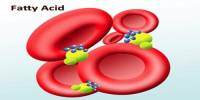Mandelic acid is an aromatic alpha hydroxy acid with the chemical formula C6H5CH(OH)CO2H that comes from bitter almonds. It’s an antibiotic that’s used to treat urinary tract infections and as an oral antibiotic. It is a 2-hydroxy monocarboxylic acid that is acetic acid with phenyl and hydroxyl groups substituting for two of the methyl hydrogens. This acid is a crystalline white solid that can be dissolved in water and polar organic solvents.
Mandelic acid is a chiral chemical that can be used to make a variety of medications. It functions as an antibacterial agent and a xenobiotic metabolite in humans. It is a 2-hydroxy monocarboxylic acid that belongs to the benzene family. Mandelic acid is often made by acid-catalyzed hydrolysis of mandelonitrile, which is benzaldehyde’s cyanohydrin. It’s an AHA that’s largely been explored for acne treatment. AHAs are natural and synthetic chemicals that have a variety of skin care advantages, including exfoliation, hydration, and firmness.

In 1831, German pharmacist Ferdinand Ludwig Winckler (1801–1868) discovered mandelic acid by heating amygdalin, a bitter almond extract, with diluted hydrochloric acid. The name comes from the German word “Mandel,” which means “almond.” It is a conjugate acid of a mandelate that comes from an acetic acid. Mandelic acid is a substrate or product of the mandelate pathway, a group of biological reactions. Mandelate racemase interconverts the two enantiomers by an alpha-CH bond cleavage mechanism.
Benefits of mandelic acid –
- Gentle on the skin: When compared to other AHAs, mandelic acid has the advantage of being gentler on the skin. As a result, it’s a great option for folks with sensitive skin. This softness appears to be attributable to the fact that mandelic acid is one of the biggest AHAs, which means it penetrates the skin more slowly. As a result, it is less irritating to the skin.
- Accelerates cell turnover: Mandelic acid promotes cell turnover and works as an exfoliant to eliminate dead skin cells. As a result, certain chemical peels contain mandelic acid.
- Promotes collagen production: Mandelic acid also improves the appearance of skin by encouraging the creation of collagen, the major protein present in skin and connective tissue. The effects of mandelic acid vary from person to person, however after a few weeks, some people have noticed a shift in their complexion and look.
Mandelic acid is an aromatic alpha hydroxy acid that has been approved by the FDA. Another enzyme in this route is malate dehydrogenase. Mandelate can also be made from trans-cinnamate by hydroxylating phenylacetic acid. Another precursor to mendalic acid is phenylpyruvic acid. Mandelic acid is found in cosmetics and medicine items that are administered topically. Mandelic acid derivatives are generated when monoamine oxidase and catechol-O-methyl transferase break down adrenaline and noradrenaline.
Mandelic acid can improve various skin care concerns, such as:
- Acne is caused by skin oils, germs, dead skin cells, and inflammation. Mandelic acid in skin care products helps to regulate sebum production, clear pores, and reduce inflammation. Acne outbreaks may be reduced as a result of this.
- In mild to moderate acne, a chemical peel containing 45 percent mandelic acid was found to be as efficient as a chemical peel containing 30 percent salicylic acid, according to a recent studyTrusted Source. Mandelic acid may offer an advantage over salicylic acid in treating inflammatory acne (papules and pustules), according to the study, and it may also have fewer side effects.
- Mandelic acid is an aromatic alpha hydroxy acid that is used to treat urinary tract infections and as an antibiotic in the mouth.
- Mandelic acid may possibly have some lightening benefits for dark areas like melasma.
- Chemical peels containing mandelic acid, according to a research, may help increase collagen formation, which declines with age. This can assist to soften the appearance of wrinkles and fine lines, giving the skin a more vibrant, youthful look.
The biotechnological creation of 4-hydroxy-mandelic acid and mandelic acid based on glucose was shown with a hereditarily changed yeast Saccharomyces cerevisiae, in which the hydroxymandelate synthase normally happening in the bacterium Amycolatopsis was joined into a wild-type strain of yeast, mostly adjusted by the trading of a quality succession and communicated. Despite the fact that mandelic acid is gentle on delicate skin, consumers should consult a dermatologist before beginning any new face treatment.
Information Sources:
















